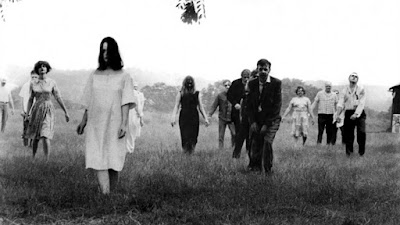David Prowse is The Creature in Hammer’s last gasp for Gothic Horror.
WITH an absurdly low budget, Terence Fisher's asylum-set FRANKENSTEIN AND THE MONSTER FROM HELL - scripted by Anthony Hinds - is a grim epitaph for the Baron and Fisher himself, a Hammer Horror - unlike many of the period - which didn't rely on sex to try to elevate its fortunes. Hollywood had once stood in line to finance the studio's profitable output, yet the vogue for Gothique had passed; when Frankenstein (Peter Cushing) is told that he’s mad, he laughs and in a line penned by the actor himself replies "oh possibly. I must admit I’ve never felt so elated in my life. Not since I first … but that was a long time ago."
As in TASTE THE BLOOD OF DRACULA, a franchise character is partnered with a younger equivalent - here surgeon Simon Helder (Shane Briant) - and the film benefits from remaining focused on the making of the monster, rather than cutting away to various asides (even the Baron's servant (Madeline Smith) is mute and inconsequential). Cushing - looking alarmingly gaunt and frail - is ill-served by a blonde curly wig and top hat, which only accentuates his thin frame and bony structure. Despite this, the actor remains as obsessive and athletic as always; a standout scene features Cushing's trademark leap, jumping onto - then off - a table, and wrapping a chloroformed coat around the Monster's head. Underneath the awkward, hulking and hairy creature suit, David Prowse gives perhaps his only performance in movies. None too pleased about his new skin, the abomination's dilemma is best conveyed when he caresses the violin possessed in his previous life, only to moments later smash it when realising the futility of the situation.
The decline of Hammer can be linked to its failure to understand the cultural shift that the end of 60s cinema represented. British filmmakers such as Michael Reeves and Pete Walker - together with American directors George A. Romero, Tobe Hooper and Wes Craven - moved horror into a new phase of intense violence that made Hammer's output positively quaint. Even by the mid-60s trouble was looming, with rising production costs and increasing competition, but Hammer seemed uninterested in nurturing new talent as their output became increasingly formulaic and threadbare both intellectually and in physical production (a good example being the unconvincing exteriors of the miniature asylum here).
Romero's nihilistic NIGHT OF THE LIVING DEAD did for the horror genre what Hammer achieved in 1957 with THE CURSE OF FRANKENSTEIN: it made everything before it seem dated and predictable. Romero's film looked like a newsreel, where economy was turned into an artistic value; Hammer, still largely stick in a Victorian world of vampires and mummies, lacked any connection to contemporary existence. This New Order created a change away from the tidiness of the British horror film and created a tableau where monsters and humans could no longer be easily distinguished. This loss of generic identity pulled British horror towards sexploitation, which was proving to be a formidable and cost-effective box-office attraction during a period of decline. But there was also an acute divergence and mutation in storylines: consider the Hammer and Shaw Brothers marriage for THE LEGEND OF THE SEVEN GOLDEN VAMPIRES, and Amicus' werewolf whodunit THE BEAST MUST DIE.




